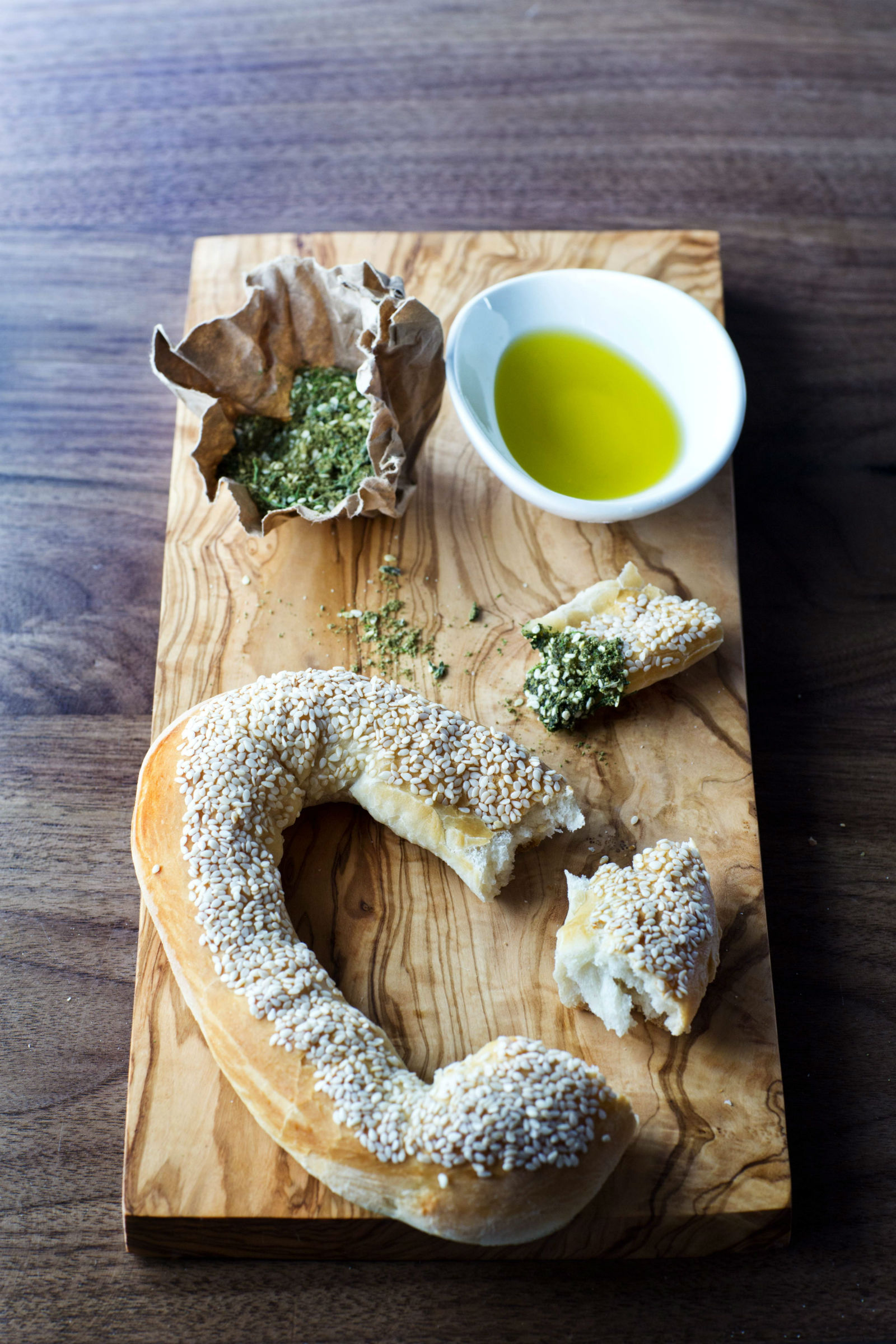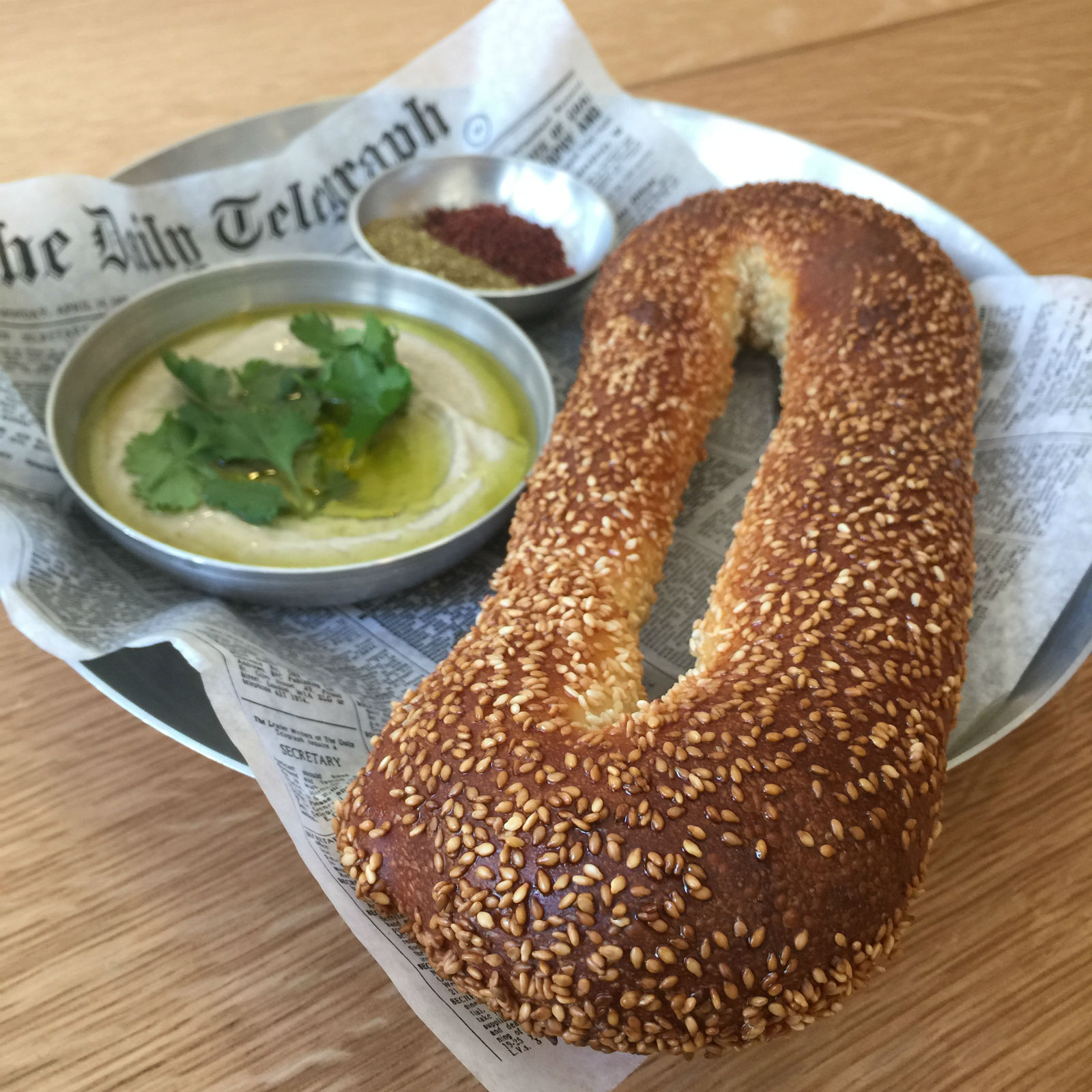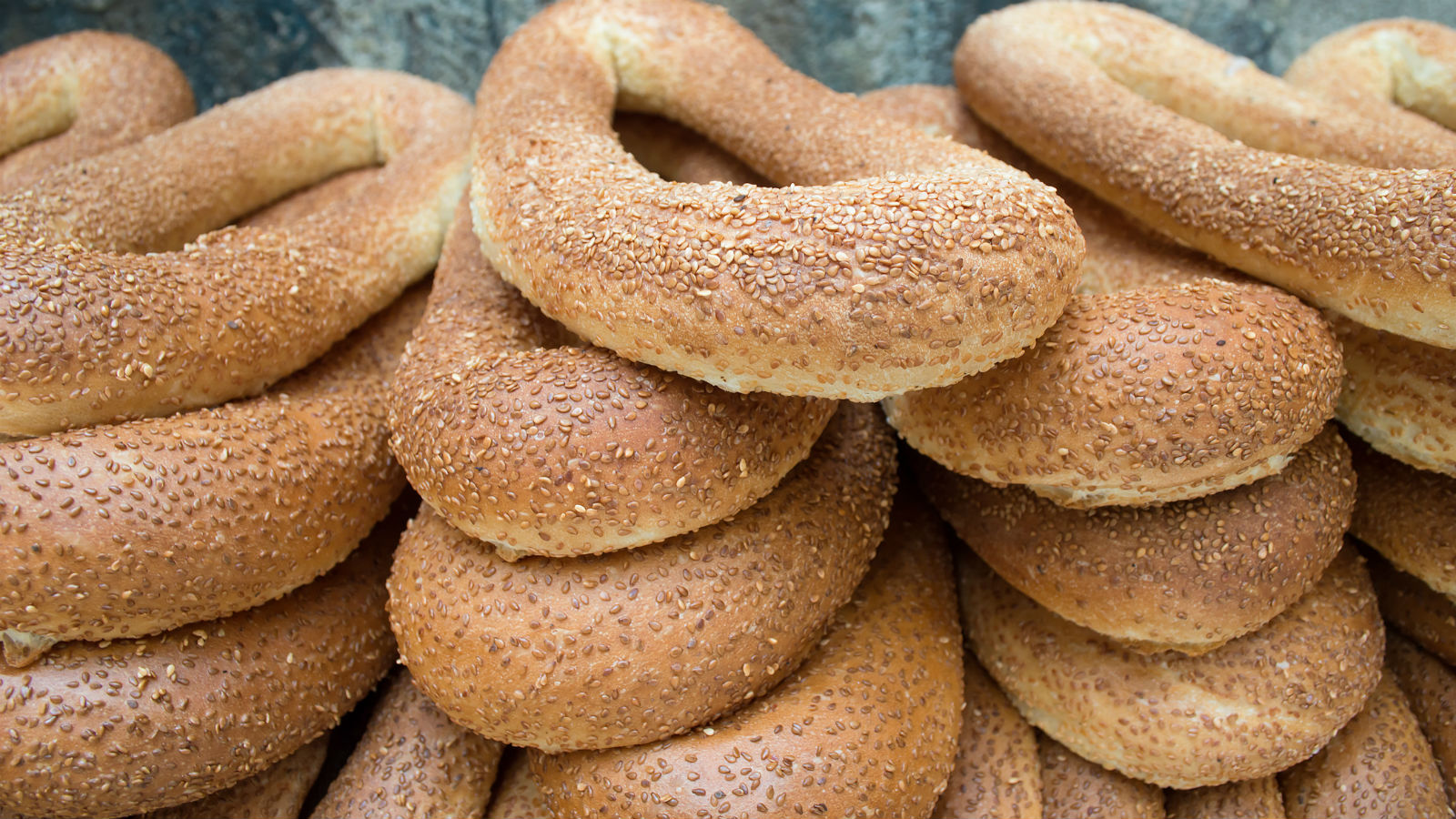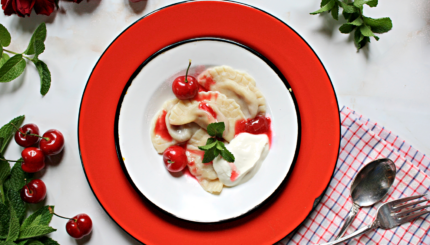If you have never heard of the Jerusalem bagel, get ready to fall in love because this bready treat is gaining popularity in the U.S.
The Jerusalem bagel is not actually related to the American bagel. Also known as ka’ak, it’s more closely related to Turkish simit, a circular bread encrusted in sesame seeds. In Janna Gur’s The Book of Israeli Food she explains that the Jerusalem-style bagel gained popularity in Israel after the 1967 Six Day War. But other than this, the exact origins of the bagels in Jerusalem are somewhat a mystery. We do know that this style of bagels have been a popular street food in Jerusalem for some time, wrapped in newspaper and almost always enjoyed with a dip in some za’atar.
The differences between Jerusalem and American bagels are vast: Jerusalem-style bagels are more oval in shape than the traditional American round bagel; they’re also thinner and covered in a healthy coating of sesame seeds. Unlike American bagels, Jerusalem bagels are not boiled then baked, which means they will taste fresh for a shorter amount of time, so best to enjoy them warm from the oven.

The Nosher celebrates the traditions and recipes that have brought Jews together for centuries. Donate today to keep The Nosher's stories and recipes accessible to all.
Chef Einat Admony was the first chef to bring the Jerusalem-style bagel to NYC, wanting to introduce this unique taste of Israel to a broader audience in America at her third restaurant Bar Bolonat. And since her introduction, it has gained further popularity and visibility when Chef Meir Adony opened Nur in 2017, which is also serving up a Jerusalem bagel. Bar Bolonat serves theirs very traditionally with olive oil and za’atar, while at Nur you can find their still-warm Jerusalem bagel served with a cumin and lime bean dip.
Gadi Peleg, owner of Nur in New York, further explains, “Israeli bagels are really nothing like New York-style bagels. There is always room for comparison but they serve different purposes: The New York version is perfectly designed to hold cream cheese and lox while the Israeli version is designed to rip and dip into either za’atar or a beautiful brunch spread.”

Craving some of this deliciousness? Yeah, me too. Uri Scheft has a recipe in his book Breaking Breads, Janna Gur also has a recipe in The Book of Israeli Food, or check out this recipe on From the Grapevine to make your own.



